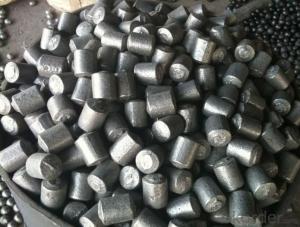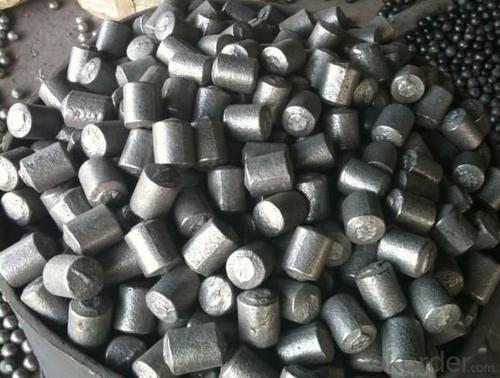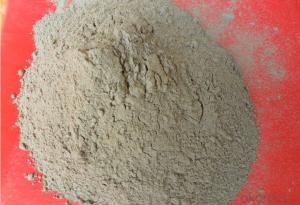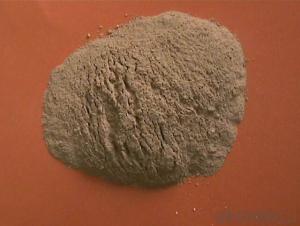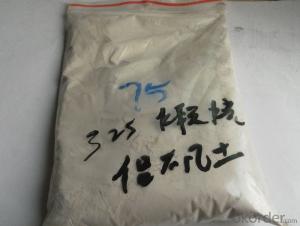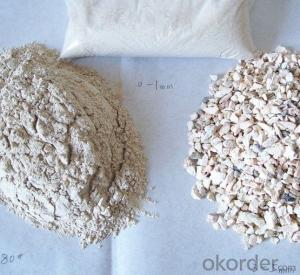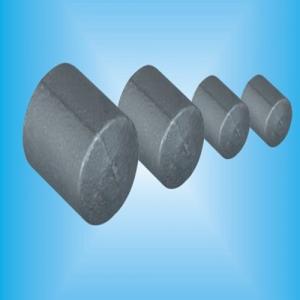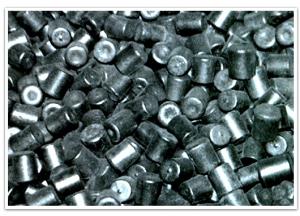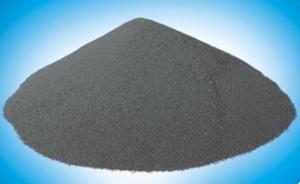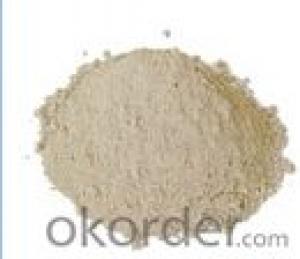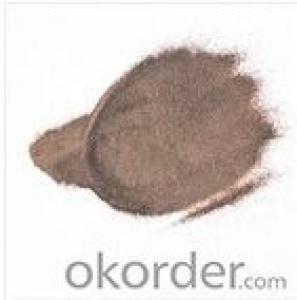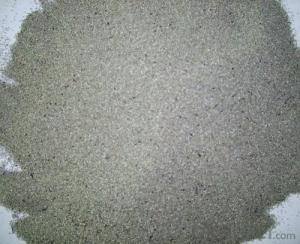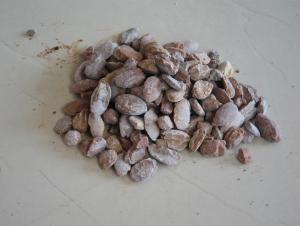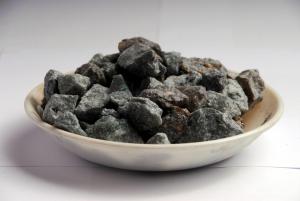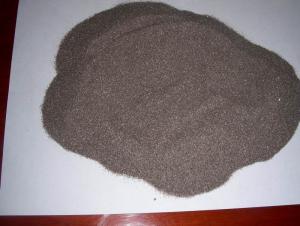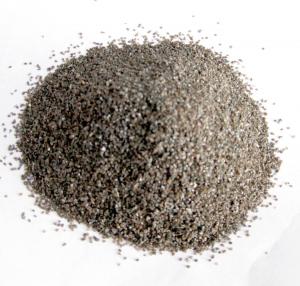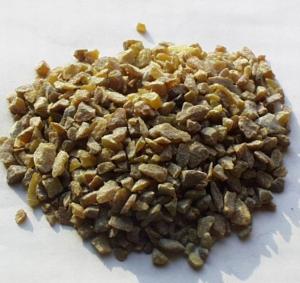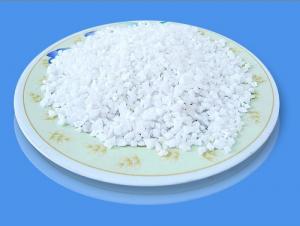Refractory Raw Materials-High Chrome Casting Bars
- Loading Port:
- Tianjin
- Payment Terms:
- TT OR LC
- Min Order Qty:
- 20 m.t.
- Supply Capability:
- 1000 m.t./month
OKorder Service Pledge
OKorder Financial Service
You Might Also Like
High chrome alloyed casting bar:
1: High hardness
2: Little breakage
3: Low wear rate
4: Good wear-resistant
5: Quality superior
High chrome alloyed casting bar
Our products used in many field, such as, cement, power, industry, chemical, mine, station and so on. The new products is high hardness, little breakage, low wear rate, good wear-resistant, our annual production capacity is more than 30, 000 metric tons. Guoyang wear-resisant materials are making frist class corporation brand.
Specification:
Φ 8; Φ 10; Φ 12; Φ 14; Φ 16; Φ 18; Φ 20; Φ 20*25; Φ 25*30; Φ 30*35; Φ 35*40.
ITEM | Designation | Chemical Composition | ||||||
C | Si | Mn | Cr | Mo | P | S | ||
Popular Grade | ZQCr10 | 1.8-32 | 0.3-1.2 | 0.2-1.0 | 10-13 | Trace | 0, 10 | 0.10 |
Cu | Ni | Nb | Ti | B | Zr | V | ||
Trace | Trace | Trace | Trace | Trace | Trace | Trace | ||
Hight Chromim Cast Grinding Bars | ZQCr26 | 2.0-30 | ≤ 1.0 | 0.2-1.0 | 22-28 | ≤ 1.0 | ≤ 0.10 | ≤ 0.08 |
ZQCr20 | 2.0-3.0 | ≤ 1.0 | 0.2-1.0 | 18-22 | ≤ 1.0 | ≤ 0.10 | ≤ 0.08 | |
ZQCr17 | 2.0-3.2 | ≤ 1.0 | 0.2-1.0 | 13-18 | ≤ 1.0 | ≤ 0.10 | ≤ 0.08 | |
ITEM | Designation | Hardness(HRC) | Microstruture | |
Quenched state(A) | Quenched state(A ) | |||
Popuar Grade | ZQCr10 | ≥ 58 | ≥ 50 | M+C M-Martensite C-Carbide |
High Chromium Cast Grinding Balls | ZQCr26 | ≥ 58 | ≥ 45 | |
ZQCr20 | ≥ 58 | ≥ 45 | ||
ZQCr17 | ≥ 58 | ≥ 49 | ||
- Q: What kinds of fireproof and fire retardant materials are there?
- It is the fire rating.fire retardant material is not completely fireproof. It is time-limited.
- Q: How long is the duration of fire resistance that fireproof window of level B can endure?
- Fire proof window of level B is the fire proof window whose duration of fire resistance is not less than 1 hour. Technical requirements: One, Materials and fittings (1) the frame of windows draw on steel or wood frames which have certain intensity and are able to ensure the integrity and stability of components. (2) Steel frame and layering can use galvanized steel or stainless steel plate. Its selection criteria shall be in line with provisions 5.1 of GB12955< steel fire door general technical conditions >. (4) The internal fillings of steel, wood frames should use non combustible materials. (5) Fire proof windows can opt for qualified products without affecting the performance of fire proof window. Light transmittance of glass shall not be less than 75% of the same layer of ordinary flat glass. (6)The sealing material between the frame and the fireproof glass should adopt the nonflammable materials, functioning as the fire blocker. (7)Hardware fittings should be tested for qualified products.
- Q: How to distinguish between class A fire resistant door and class B fire resistant door from appearance ? What are the differences between the two refractories? Thank you !
- First, the materials are the same. But the thickness of grade A and grade B fire doors is different juding from their appearances. Grade A :50. Grade B:45. Added question: Do you refer to steel fire door?
- Q: Who knows how to divide the building fire grade and fire resistance grade?
- I hope to help you building fireproof rank division is one of the most basic measure in building fire safety technical measures, Building's fireproof rank is divided into class one, two, three, four according to China's architectural design specification. Fire-resistant capability of the highest level is the strongest; Fire resistance of four level of the weakest. The fire resistance level of a building depends on the combustion performance and fire resistance of the building components that comprise the building. The so-called building component refers to a series of basic components, such as wall, foundation, beam, column, floor, stair, ceiling and so on.
- Q: I want to know what is the slim in the refractory bricks
- Where are you from, I can introduce to you
- Q: Selection of refractory materials?
- Inorganic non-metallic material with a refractoriness of more than 1580 degrees. Refractoriness refers to the temperature of a sample of a refractory cone, which is resistant to high temperature without softening, and does not soften and melt down. Refractory materials are associated with high temperature technology, which originated roughly from the middle of the bronze age. In the Eastern Han Dynasty has made China kiln firing porcelain material and with fireclay refractory sagger. In the early twentieth Century, refractory materials were developed towards high purity, high density and ultra high temperature products. At the same time, unshaped refractory materials and refractory fibers without firing and energy consumption were developed. With the development of modern technology, atomic energy, space technology, new energy technology, refractory material having high temperature resistance and corrosion resistance, thermal shock resistance, erosion resistance and other comprehensive excellent performance has been applied.
- Q: Can anyone tell me which materials are fire-proof high temperature resistant material?
- Fireproof high temperature resistant materials such as: Quartz, tridymite, cristobalite, chalcedony, flint, opal, quartzite, White silica sand, diatomaceous earth, the silicon oxide (SiO2) contained in these siliceous materials is at least 90% . The silicon oxide in some pure raw material can be above 99 %. Siliceous materials are acidic in high-temperature chemokinesis. when existing metallic oxide or contact with metallic oxide, they will conduct chemical actions and conbine into fusible silicates. Therefore, if the siliceous raw material contains a small amount of metal oxide, its heat resistance will be seriously affected..
- Q: Does refractory belong to metallurgical auxiliary materials?
- Refractory includes metallurgical auxiliary materials.
- Q: Is it normal for caable fire resistant material to catch on fire?
- Abnormal, preventive measures: 1 take fire preventive measures. Measures taken for fire retardant measures of cable: (1) seal closely with fire resistant materials holes ran by cables through walls, shafts to prevent the cable fire, high temperature gas diffusion and spread when cables are on fire. (2) to wrap the cable with the insulation refractory material, when the cable is surrounded with fire, warpped cable is insulated by the insulation material from fire, so it will not be burned. If the cable itself is on fire, fire will be extinguished thankes to lack of oxygen in warpped cable, to avoid the fire to spread out. 2 to strengthen the cable circuit switch and regular protective check and maintenance, to ensure that the action is reliable. 3 to strengthen the cable operation and monitoring, to avoid the overload of the cable operation. . 4 regularly clean dust on the cable, to prevent cable from catching on fire due to the accumulation of dust. 5 to ensure the construction quality, the quality the cable must be strictly in line with the requirements and standards. 6 cable laying should maintain enough distance form the heat pipe, control cable is no longer than 0.5 meters; power cable is no longer than l meters. Control cable and power cable should be divided into slots, be layered and seperated instead of being overlapped . For the parts that do not meet the requirements, measures must be taken to insulate heat and fire. 7 regularly teat cable , abnormal problem should be handled in a timely manner. 8 install fire alarm so that fire will be discovered on time, and cables will not catch on fire. 9 the cable trench should be kept dry to prevent the cable from being affected with damp, or leading to declined insulating function and short circuit.
- Q: Who knows what fire heat preservation material are there?
- It can be realized through inorganic insulation materials, such as glass wool, rock wool, foam glass etc.. The phenolic foam materials inside organic foam material is more special. Phenolic foam does not only have a good thermal insulation performance, but also can be combined with steel and other materials, to achieve a class A fire retardant level. Class A thermal insulation include: Rock (ore) cotton, foam glass, inorganic thermal insulation mortar, etc.. 1 thermal insulation materials with class A combustion performance Phenol, powder polystyrene particles etc.. Fire insulation materials of fire barrier zone can use class A material with class A combustion performance in rock (ore) cotton, foam glass, inorganic thermal insulation mortar. Hope my answer will help you.
Send your message to us
Refractory Raw Materials-High Chrome Casting Bars
- Loading Port:
- Tianjin
- Payment Terms:
- TT OR LC
- Min Order Qty:
- 20 m.t.
- Supply Capability:
- 1000 m.t./month
OKorder Service Pledge
OKorder Financial Service
Similar products
Hot products
Hot Searches
Related keywords
